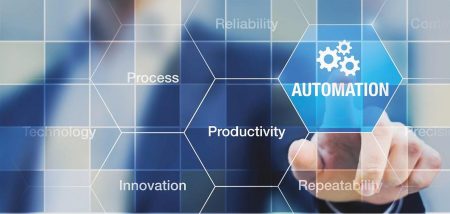Deploying Robotic Process Automation in Contact Centres Improves Customer Engagement and Business Workflows

The contact centre has gone through myriad shifts in focus over its tenure. In the early days of customer service, the call centre – later dubbed contact centre – was viewed as a cost centre and not the customer engagement hub that it has developed into today.
Initially, the key focal point for businesses was increasing operational efficiencies. Over the years however, contact centre solution providers became quite adept at doing so through the development of advanced analytic applications that provide insights into agent performance and workforce management.
Frost & Sullivan’s recent whitepaper, Robotic Process Automation: A New Era of Agent Engagement, shines light on one of the fastest growing contact centre solutions, Robotic Process Automation (RPA), a software that incorporates technologies such as artificial intelligence (AI) and machine learning (ML) to automate routine, high-volume tasks that are sensitive to human error, and the benefits associated with its adoption.
For many businesses, an important principal design focus is catering to a changing consumer and employee base that favours work-life balance and employee engagement. Providing the tools that enable workers to have more satisfying jobs is now a business imperative and is being achieved through enhanced workforce optimization applications. Robotic process automation and back-office workforce optimization are two such applications that can have a substantial impact on the overall quality of customer service and employee satisfaction.

“RPA is being deployed across many areas within businesses with varying levels of complexity. For instance, it can be of a generalized nature, propagating data into desktop applications or documents, or it can be used to create highly customized applications geared to a specific vertical market or a specific business area, such as accounting or finance,”
“RPA can be customized to a specific company, or be enterprise-grade software that is scalable and reusable. RPA also can incorporate the use of advanced AI and ML that allow the ‘robots’ to learn and change as new data becomes available, improving their capabilities over time.”
RPA doesn’t replace existing business process management (BPM) systems, case management systems or contact centre/back-office applications. Rather, it augments and complements these solutions, without the requirement for complex application programming interfaces (API) or coding, allowing for quick deployment.
“Integrating RPA with additional analytics assets, as is done by NICE, can drive further efficiencies, as well as insights. For example, utilizing desktop analytics can help a business identify further areas for process automation,” notes Jamison. “The key is to be strategic, not tactical. Taking a one-off approach to process management is a limited point of view. Without an overarching plan for enterprise-wide process automation, you risk cascading process inefficiencies.”
To download the complimentary whitepaper Click Here






